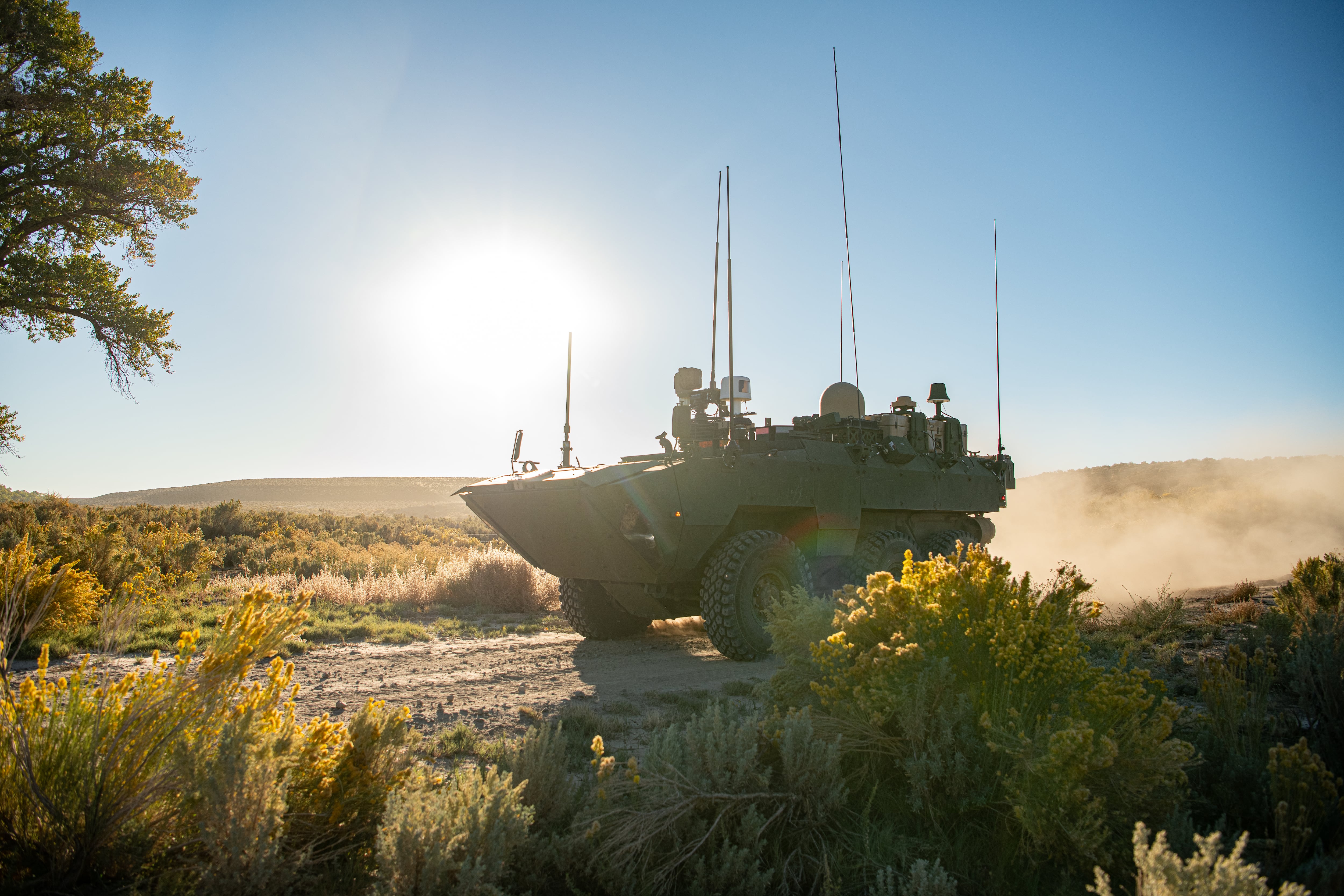The Marine Corps has selected two companies to build prototypes of the 30 mm-cannon version of the advanced reconnaissance vehicle ― the replacement for the aging light armored vehicle.
Program Executive Office-Land Systems announced Wednesday that General Dynamics Land Systems and Textron Systems Corporation would design, develop and manufacture an advanced reconnaissance vehicle 30-mm autocannon prototype vehicle.
The contract award is $11.8 million for Textron and $10.9 million for General Dynamics. Each company will produce one prototype to be delivered by fiscal 2025, land systems spokesman David Jordan told Marine Corps Times.
If prototyping is successful for the family of vehicles, which includes other variants, production could cost between $1.8 billion and $6.8 billion throughout five years, according to a 2022 Congressional Research Service report.
Both Textron and General Dynamics announced in January that each company had completed testing of a command and control advanced reconnaissance vehicle variant prototype, according to company websites.
RELATED

This 30-mm cannon variant will use the same turret and weapon system that is on the amphibious combat vehicle-30, said Steve Myers, Marine Corps program manager for light armored vehicles.
“Ensuring commonality is crucial, especially for the Marine Corps’ capacity to maintain weapon systems with limited fleets,” Myers said in a land systems release. “The prototyping of the ARV-30 allows the government to test and confirm the requirements before entering the engineering and manufacturing development phase.”
The Marine Corps established the Light Armored Vehicle Way-Ahead plan to replace the light armored vehicle, which has been in service since the early 1980s. The light armored vehicle is a trooper carrier vehicle with radio systems and a 25 mm Bushmaster cannon that has been used extensively in Marine deployments since its fielding.
But light armored vehicle’s life cycle is expected to end in the mid-2030s, Myers said at the time.
In 2019 the service announced the advanced reconnaissance vehicle concept as the official replacement for the light armored vehicle.

But the Corps wanted more than just a newer up-armored gun truck. In the following year, Marine Corps Systems Command staff and Office of Naval Research personnel developed the advanced reconnaissance vehicle concept that would use the vehicle to conduct command and control, sensing, cyber and drone missions.
The Marines later laid out concepts for a command, control, communications and computers/unmanned aerial systems version. Textron and General Dynamics delivered those prototypes in late 2022. Marines tested and evaluated those in from January 2023 to November 2023.
What the Marines want in the advanced reconnaissance vehicle:
- An automatic medium-caliber cannon.
- Anti-armor capability to defeat close-in heavy armor threats.
- Precision-guided munitions to defeat threats beyond the engagement range of threat systems.
- Unmanned systems swarm capability to provide persistent, multifunction munitions.
- Advanced, networked, multifunctional electronic warfare capabilities.
- A modern command-and-control suite and a full range of sensors.
- Organic unmanned aerial and ground systems that can be deployed from the advanced reconnaissance vehicle.
- Active and passive vehicle protection.
- Robust cross-country/on-road mobility performance with shore-to-shore water mobility.
Source: Congressional Research Service
Early planning for the advanced reconnaissance vehicle began in 2016, prior to the Force Design 2030 launch under former Commandant Gen. David Berger in 2019.
Before force design changes, the advanced reconnaissance vehicle was slated to serve much as the light armored vehicle had in light armored reconnaissance battalions.
But the Corps continues to restructure its force, aiming for leaner, smaller formations that can operate distributed, conduct reconnaissance, and counter reconnaissance for the joint force. Platforms such as the ARV must be able to help with deep sensing and pass data for targeting and protect themselves from electromagnetic attack and detection.
In 2023, Berger spelled out in his final update to the force design how reconnaissance would change.
The service needed “littoral, multi-domain reconnaissance capabilities that our light armored reconnaissance battalions do not currently provide.” The document notes that the Corps will shift instead to “mobile reconnaissance battalions” that will include maritime, light mobile and light armored companies.”
Todd South has written about crime, courts, government and the military for multiple publications since 2004 and was named a 2014 Pulitzer finalist for a co-written project on witness intimidation. Todd is a Marine veteran of the Iraq War.








